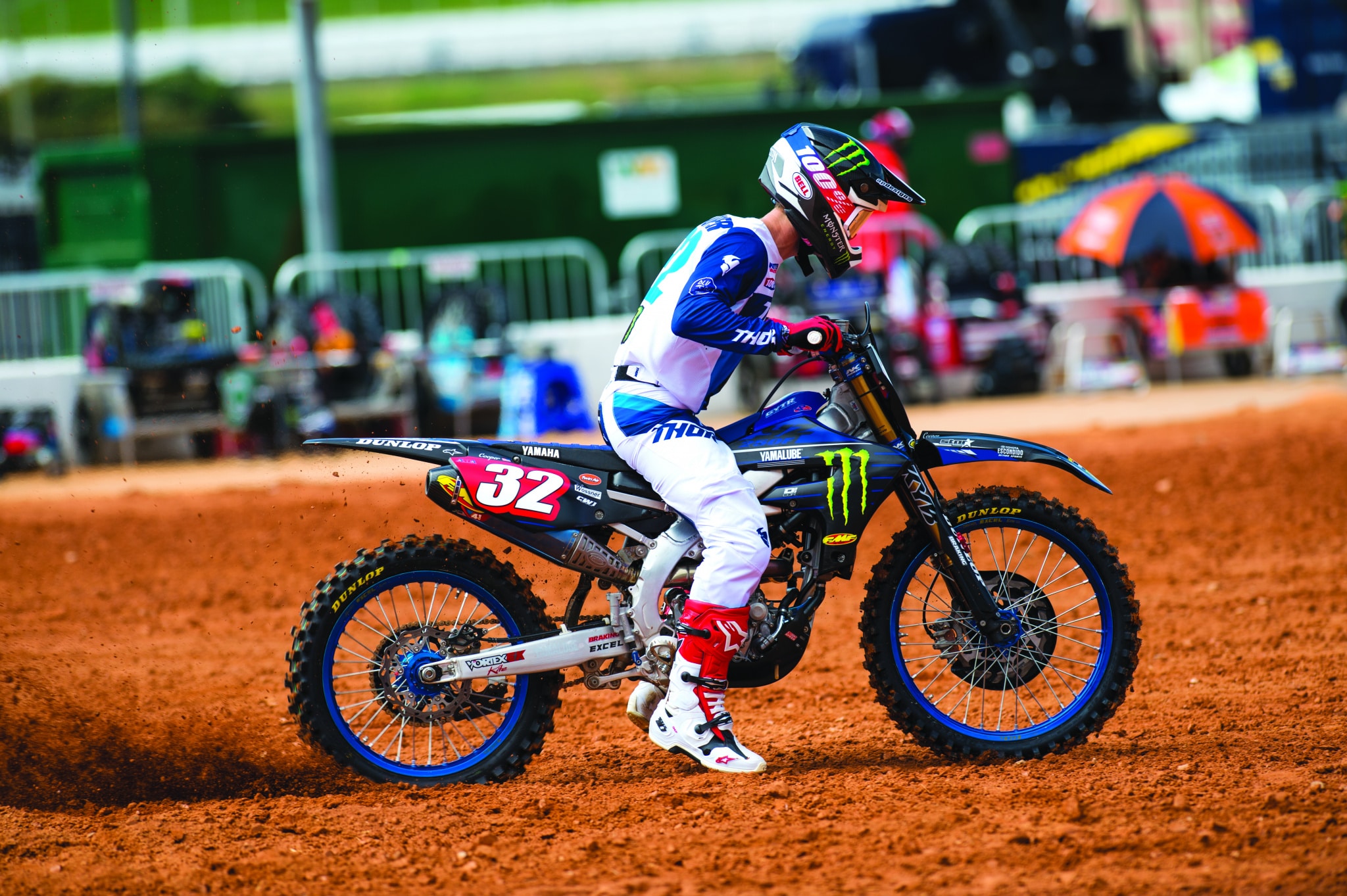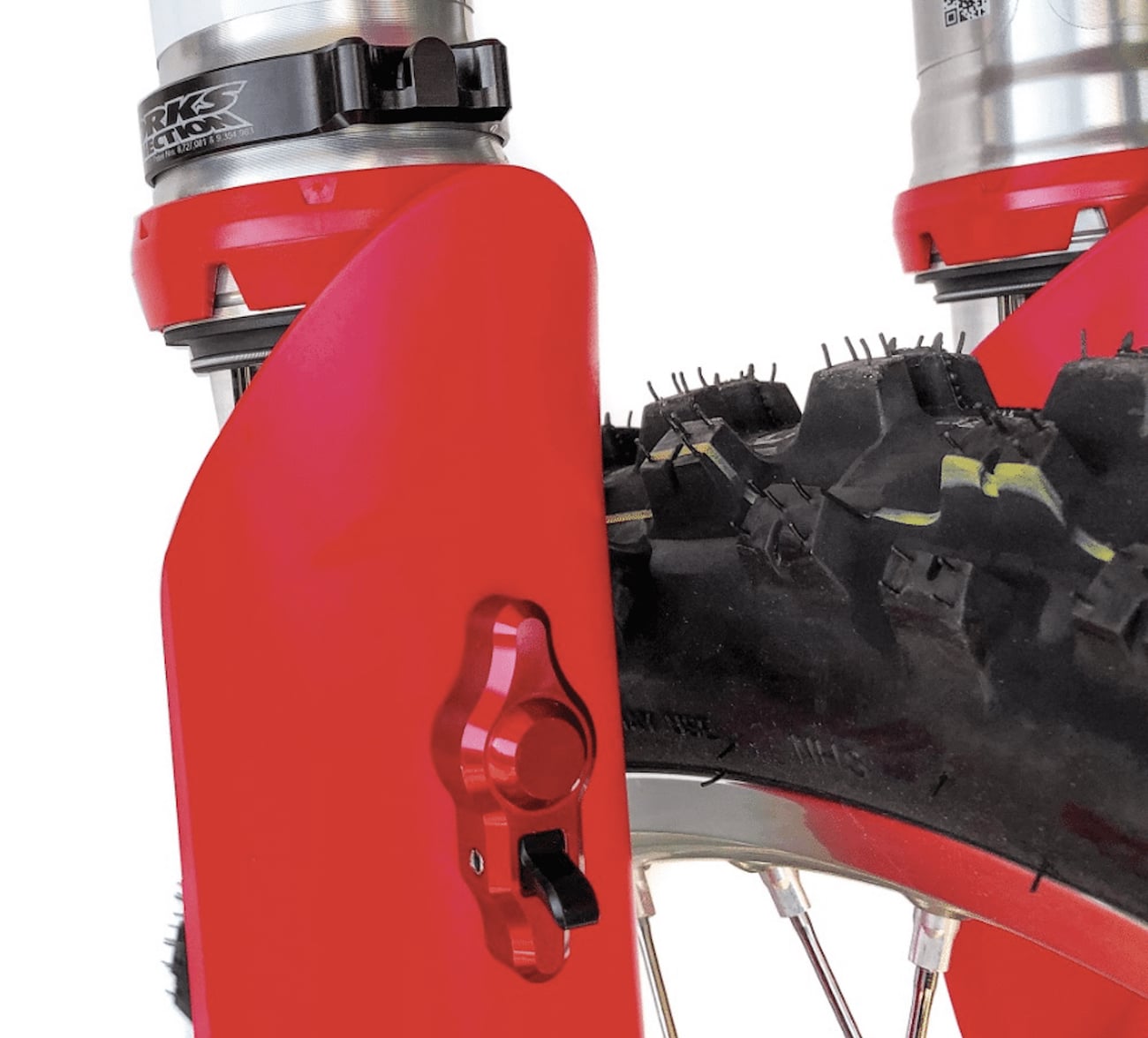TEN THINGS YOU NEED TO KNOW ABOUT HOLESHOT DEVICES
(1) Concept. Long before special ECU mapping, traction control and launch control came along, starting devices (better known as “holeshot devices”) were invented to help riders improve their starts. If a rider does a wheelie off the gate, he has two options: chop the throttle or loop out. The starting device was created to keep the front forks compressed on the start to hold the front end down.
(2) History. The original starting device was invented back in 1979 by Team Husqvarna rider Arlo Englund. The idea fizzled until the European factory Yamaha team resurrected it in the MXGP World Championship with Chad Reed in 2001. Chad finished second overall to Mickael Pichon in the 250 class before coming to America to race Supercross in 2002. Reed showed up to Anaheim 1 with a starting device and used it discreetly until Honda figured out what it was a few weeks later.
(3) Works Connection. With the factory Honda race team making its own starting device, other companies like Works Connection and Pro Circuit jumped at the chance to make them for the public. Works Connection had been making skid plates and frame guards since 1989 and, after five months of testing, came out with the original Pro Launch starting device in 2002.
(4) Prototype. The original prototype starting devices had a simple hook and hole system. The fork leg used a ring with a hook attached to it that could be inserted into a hole in the fork guard. Like the starting devices of today, it would release when the forks compressed. The problem with this design was that it could re-hook into the hole when the rider passed through a whoop section or any rough spot on the track.
(5) Spring-loaded designs. The first effective holeshot devices utilized a spring-loaded pin that was extended by a push button on the fork guard. The pin latched into a hole on the fork leg to keep the forks compressed until it snapped back into position once the forks compressed enough to sink below the device. One negative aspect of the spring/button design was that it could re-engage mid-race if hit by roots. Tamer obtained a patent on the spring/pin design, but most companies came up with a better design to beat the patent.
(6) Pro Launch 2.0. The second-generation Pro Launch from Works Connection used a spring-less design that was lighter, more consistent and easier to set than the original design. To ensure the Pro Launch 2.0 didn’t engage mid-race, it used a magnet to secure the hook tightly to the fork guard. Plus, the trigger was angled downward so that it couldn’t be activated by roost. The Pro Launch 2.0 also comes with a custom drill guide template and countersinking tool. Plus, it’s used by HRC Honda, Star Racing Yamaha and MotoConcepts Honda.
(7) Specifics. Although they look identical, starting devices are bike-specific. Motorcycle brands vary by ring diameter, ring mounting location, ring bumper size as well as the distance between the fork and fork guard. For example, the Suzuki’s fork guard is positioned further from the fork leg than the Honda’s. The average starting device is set to compress your forks between 90mm and 110mm; however, many Supercross riders have been seen with devices set as low as 150mm.
(8) Malfunctions. It’s common in Supercross to see riders hit the first jump after the start with their forks still compressed because of their extra-low mounting position, stiffer forks, slower first-turn entry speeds and short smooth start straight. In Supercross, the riders aren’t compressing their forks as much while slowing down. If the holeshot device does not release, it can lead to a crash because of the limited fork travel going into the next obstacle.
(9) Jeffrey Herlings. In the first moto at the 2021 Dutch Grand Prix, 450 title favorite Jeffrey Herlings’ starting device stayed engaged through the first two corners and a straightaway before disengaging on a roller jump, causing him to lose balance and jump shorter than expected. Behind him, Ivo Monticelli jumped and landed on Herlings, breaking Herlings’ shoulder blade. Amazingly, Herlings didn’t crash and went on to win the moto while riding on pure adrenaline, but he couldn’t line up for the second moto.
(10) Rear holeshot device. This is a less popular concept but interesting nonetheless. Accompanied by the front device, the rear device compresses the rear shock, completely immobilizing the suspension front and rear. The purpose is to make the bike rigid for the start, ensuring that all the power and energy are transferred directly into forward motion instead of being lost to the suspension’s contraction and extension. ο







Comments are closed.